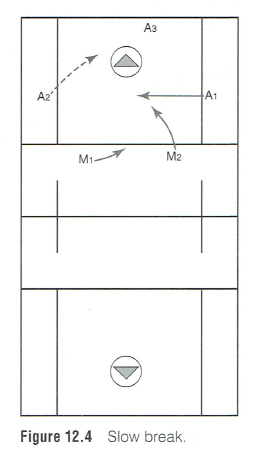|
Creating Offensive Opportunities During The Transition Period By: Jack Kaley and Rich Donovan Originally Published in Lacrosse Essentials - Provided by: Human Kinetics The transition pattern requires the defense to adjust quickly within the restraining line. It is advantageous to attack the goal before the opposing team gets settled into its team defensive scheme. The skill level of the offensive players is higher when they can play this style of offensive lacrosse. The secondary break provides situations that allow you to play to your strengths. These include dodging a defensive player who is moving toward the offensive player, moving the ball in a way that forces defensive players to turn their heads and lures them out of a backup position, Slow Break Relocation Active Players in Transition Offense SCOOP AND PASS DRILL Purpose Setup Execution Coaching Points BREAK-OUT DRILL Purpose Setup Execution Coaching Points FULL FIELD BREAKOUT DRILL Purpose Setup Execution Coaching Points
|




 preventing the opponent from communicating because they are adjusting to the rapid change from playing offense to defense, cutting to the ball and off the ball to create open lanes for feeds and dodges, using the wing position for feeding without pressure, and creating shots from inside 10 yards for offensive players of average ability who will convert at a higher percentage.
preventing the opponent from communicating because they are adjusting to the rapid change from playing offense to defense, cutting to the ball and off the ball to create open lanes for feeds and dodges, using the wing position for feeding without pressure, and creating shots from inside 10 yards for offensive players of average ability who will convert at a higher percentage.


